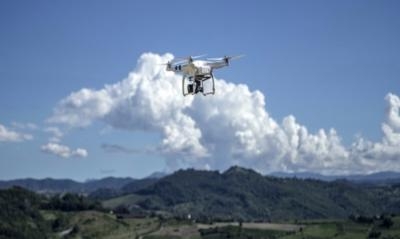EAA: Common Sense Must Prevail Against Rush To Rulemaking
As technology involved in Unmanned Aerial Systems (UAS), commonly known as drones, continues to speed forward, one of most important questions for the FAA, general aviation, and even commercial air travel involves what effect it will have on the national airspace system.

The recent UAS Symposium in Baltimore, MD brought news that FAA is drafting a four-tier approach to remote identification for drones, in an attempt to handle the multitude of sizes and uses of drones in use now and in the future. This proposal could cause headaches for model aircraft enthusiasts and be a potential harbinger of how the FAA would handle drone integration with low-altitude manned aircraft.
One such example is a proposal that would require nearly all remotely operated UAS devices to have the electronic equivalent of an N-number. Such remote identification would also potentially encompass radio-control aircraft that have been operating safely for decades in designated flight areas and under Academy of Model Aeronautics safety guidelines.
“We understand that the FAA must respond to the growing number of UAS operations, particularly to the emerging commercial drone industry,” said Sean Elliott, EAA’s vice president of advocacy and safety. “At the same time, common sense must prevail against a rush to rulemaking pushed by well-financed companies that want to dominate the lower portions of the national airspace. While that would present an immediate threat to safe model aircraft operations, we’re also insistent that manned aircraft operations at those altitudes cannot be inhibited.”
Earl Lawrence, director of the FAA’s office on drone integration, presented the four-tier plan at the Baltimore symposium, with a Politico report noting that the proposal included:
A first tier allowing recreational-use drones weighing less than 250 grams to fly in pre-approved hobbyist flying sites, like those organized by AMA, without equipment for remote identification and tracking.
Drones less than 55 pounds flying up to 400 feet would need to have a ground control station with internet connectivity pinging the identification of the drone. That would encompass many larger radio-controlled models that have previously operated at RC flying facilities.
Third, drones flying within 400 feet of a structure would themselves need to have internet connectivity so that they could connect to the ground control station, which would ID the drone and its location.
The fourth tier — flights beyond visual line of sight — would require drones to be equipped with detect-and-avoid technology that would broadcast out their location.
The Commercial Drone Alliance insists that hobbyists far outnumber commercial drone users and shouldn’t “clog the sky” as the industry works to develop rules of the road for the “highways in the sky,” according to the Politico report. The CDA favors a 250-gram weight threshold like the one the FAA is recommending.
“EAA has long maintained that drone integration in the national airspace must consider three important elements,” said Elliott, who led EAA’s involvement the consensus “Know Before You Fly” campaign for UAS operations introduced in 2015. “First, no new airspace restrictions should be forced on manned operations because of drone flights. Right-of-way and priority should always be given to manned aircraft operations. Finally, aircraft owners and pilots should not have to be required to install new equipment to track and ‘see’ drones beyond that already required by FAA regulations.
“As we bring these systems into the airspace, UAS operators must bear the burden of adopting the technology that would allow them to participate safely. Manned operations should always have safety and airspace priority over UAS operations.”
(Source: EAA media release. Image from file)
 NTSB Final Report: Aviat A1
NTSB Final Report: Aviat A1 ANN's Daily Aero-Linx (07.08.25)
ANN's Daily Aero-Linx (07.08.25) Classic Aero-TV: Fly Corvairs Reliable Engine Alternative
Classic Aero-TV: Fly Corvairs Reliable Engine Alternative ANN FAQ: Contributing To Aero-TV
ANN FAQ: Contributing To Aero-TV Classic Aero-TV: CiES Fuel-Quantity and e-Throttle Systems Praised
Classic Aero-TV: CiES Fuel-Quantity and e-Throttle Systems Praised



